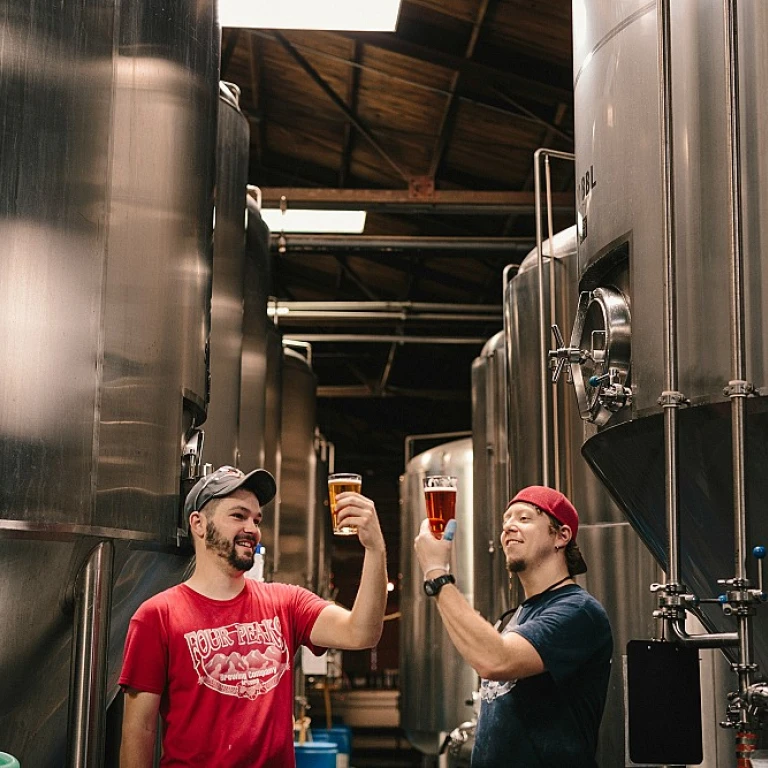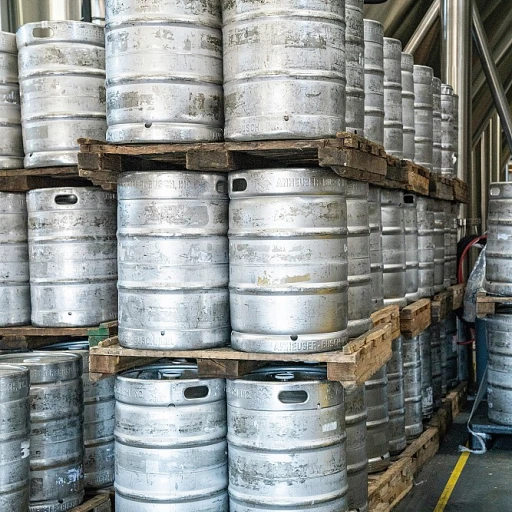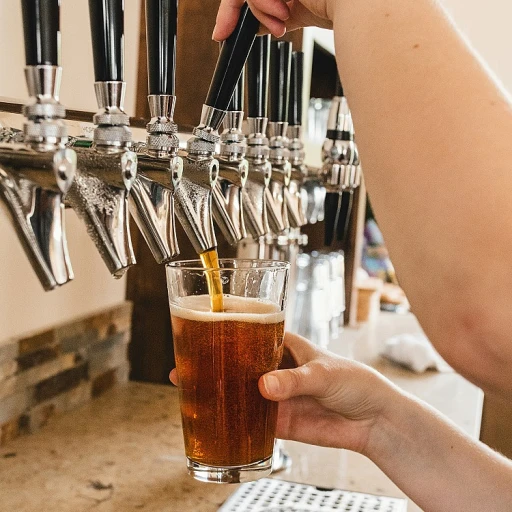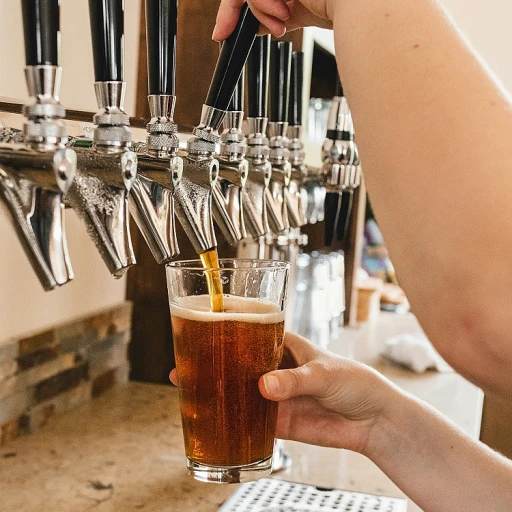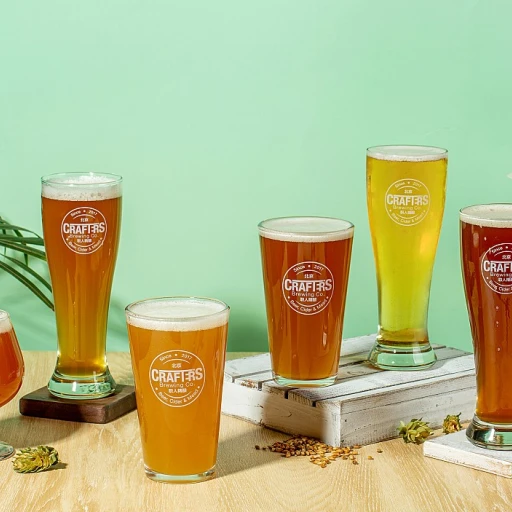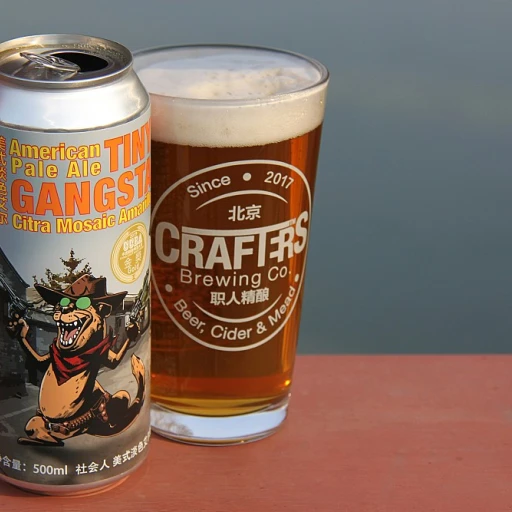
Understanding Keg Sizes
Different Sizes of Draft Beer Containers
When it comes to draft beer, understanding the various sizes of kegs available is crucial for ensuring a smooth serving experience. Whether you're hosting a small gathering or a large event, choosing the right size can make a significant difference.
Kegs come in several different sizes, each with its own unique capacity and purpose. The most common sizes include the sixth barrel (sometimes called a sixtel), quarter barrel, half barrel, and full barrel. Each of these options has its advantages, from space-saving designs to offering a wide variety of beers without taking up too much space.
The Right Choice for Your Needs
As you explore the different keg sizes, keep in mind your specific needs. For instance, if you're seeking to host an intimate party with a select group of friends, a smaller keg such as a sixth barrel may be ideal. On the other hand, larger gatherings may benefit more from the capacities offered by half or full barrels.
If you're unsure about which option is best, consider the typical number of servings per keg. This understanding can aid in determining not only the appropriate size but also how many beers can be efficiently served. Having a grasp on this aspect is especially important when opting for the popular half keg, which provides a practical balance between size and servings.
For those looking to perfect their pouring technique, mastering the art of the keg tap can be an invaluable skill, ensuring you provide the best experience for your guests. You can learn more about perfect pours in our guide.
The Half Keg: A Popular Choice
The Advantages of Choosing a Half Keg
The half keg, often referred to as a "half-barrel," holds a special place in the hearts of beer enthusiasts. It's the perfect choice for those seeking a balance between quantity and practicality. Here’s why a half keg might be just the right fit for your next gathering:
- Moderate Capacity: The half keg provides approximately 15.5 gallons of beer, translating to about 165 twelve-ounce servings. This makes it ideal for medium-sized events where you want to ensure everyone gets a taste of what's on tap.
- Versatile Use: Whether it's a tailgate party, wedding reception, or a backyard barbecue, a half keg suits all kinds of occasions. It’s a versatile option that can cater to diverse beer preferences, allowing you to offer your guests a delightful selection.
- Cost-Effective: When compared to purchasing multiple smaller kegs, a half keg can often be a more economical choice. You save on both the cost of the beer and potential rental fees for additional kegs.
- Optimal Freshness: Draft beer from a keg is often hailed as the fresh choice. The half keg maintains this freshness, ensuring that each glass poured is as delicious as the last. To understand more about enjoying draft beer, you might consider reading about the joy of draft beer from keg to tap.
Comparing Keg Capacities
Capacity Comparisons Between Common Keg Sizes
To better understand how much beer a half keg holds, it's helpful to compare it with other common keg sizes available in the market. This comparison will give you a clearer picture of just why the half keg is such a popular choice for various events and gatherings.
- Full-Sized Keg: Often referred to as a "full keg," this larger size holds approximately 15.5 gallons of beer or about 165 twelve-ounce servings. Perfect for large parties or events where beer is the star of the show.
- Quarter Barrel Keg: Also known as a "pony keg," the quarter-barrel keg contains about 7.75 gallons, equating to roughly 82 twelve-ounce beers. This size is suitable for smaller get-togethers or when you are serving multiple types of beverages.
- Sixth Barrel Keg: The sixth-barrel keg, often called a "sixtel," contains 5.16 gallons and provides about 55 twelve-ounce servings. It's an excellent choice for intimate gatherings or venues where space is an issue.
- Specialty Keg Sizes: Beyond the standard options, there are a variety of specialty keg sizes perfect for craft brews or unique serving requirements. These can vary widely, but they offer flexibility for specific events or taste experiences.
As you can see, the half keg stands as a middle ground, offering a balance between quantity and convenience. Its capacity makes it an excellent choice for a range of occasions, providing enough servings for a sizable group without the overpowering bulk of a full-sized keg.
Practical Uses for Different Keg Sizes
How Keg Sizes Suit Various Needs
When planning an event or setting up a home bar, it's essential to understand how different keg sizes can be adapted to meet various needs. While the half keg is among the most popular choices, your requirements can influence which size you opt for.
- Large Gatherings: Half kegs are perfect for larger parties or events as they can hold up to 124 pints of beer, making them ideal for keeping the drinks flowing through the night. Their capacity allows for a balance between space efficiency and the ability to serve many guests.
- Smaller Events: When hosting smaller get-togethers, you might opt for a smaller keg size, like a quarter or sixth barrel, to avoid excess wastage and overbuying. These accommodate fewer guests without compromising freshness or variety.
- Variety Offering: For those who prefer a diversified beer selection, using multiple smaller kegs can offer different styles and flavors, making it easier to cater to varied tastes without overcommitting to a single type.
- Space Considerations: If space is a constraint, understanding the physical dimensions and capacities becomes crucial. Sometimes a smaller keg is the best choice simply because of storage and accessibility.
Choosing the right keg size takes into account not just the number of guests, but also the spatial setup and desired beer assortment, providing flexibility and ensuring you meet your beverage needs effectively.
Tips for Choosing the Right Keg
Consider Your Event Size
When choosing the right keg, one of the most important factors to consider is the size of your event. If you're hosting a large gathering, the half keg, explored earlier, could be your best bet thanks to its generous capacity. However, for smaller parties or more intimate gatherings, a quarter or mini keg might suffice and save you from having excess beer left over.
Think About Beer Variety
If your event's drinking guests appreciate variety, consider opting for multiple smaller kegs. This way, you offer a range of beer options without ending up with a surplus of any single type. This is particularly effective for events where guests have different tastes.
Account for Available Space
The space available for storing and dispensing the keg is another crucial factor. Half kegs can take up quite a bit of room and require a sturdy surface for safe placement. If space is limited, you might need to consider smaller kegs or even draft beer solutions that work well in compact settings.
Balance Cost and Efficiency
Cost and efficiency go hand in hand when selecting a keg size. Larger kegs might seem more economical in terms of beer volume per dollar, but if unused beer is wasted post-event, those initial savings could evaporate. Weigh the costs with expected consumption to ensure you're getting the best value.
Coordinate with Your Tap System
Finally, ensure that your tap system is compatible with the keg size you're considering. Half kegs, for example, may require specific beer dispensing equipment, which adjusts to the sizes and types of kegs you're choosing. Mastering your tap system's nuances will ensure a smooth pouring experience, which can greatly enhance overall enjoyment.

